THE LEAFLET
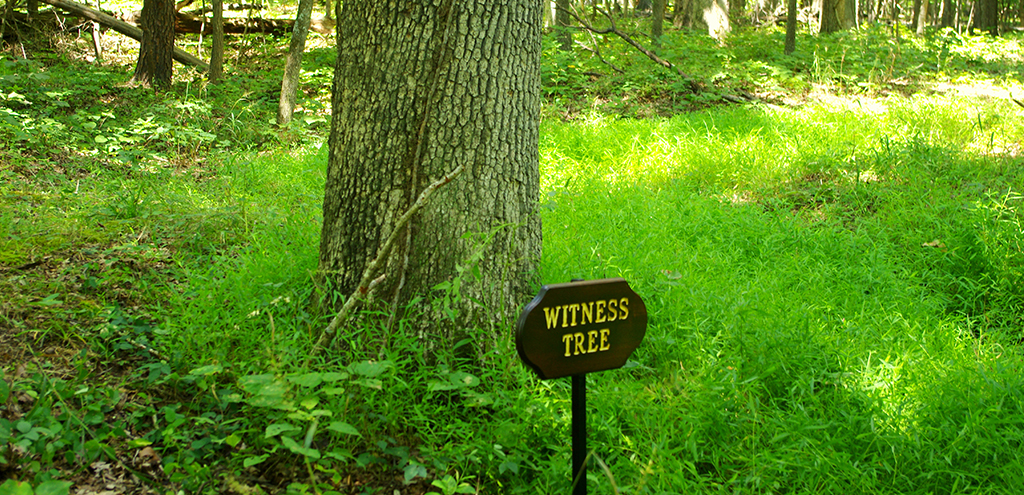
Five Witness Trees for Veteran’s Day
Witness trees are those considered to have been present, and therefore would have been witness to, at key historical events. Witness trees are precious – they obviously survived the experience of the event they witnessed (which could include cannonballs, bullets, and other shrapnel) but they’ve continued to dodged disease and storms and whatever else humans and nature have hurled at them for years.
Witness trees have been known to hide bullets they’ve absorbed beneath new layers of wood and bark, and they heal other visible scars over time. While they may look like ordinary trees, they have incredible stories to tell. Overall, they remind folks that history is hardly ancient. Looking today at these trees, we can marvel at a different kind of endurance—the ability of a magnificent tree to survive not only the fury of war but the poignant and inevitable passage of time, to provide a living link to the past.
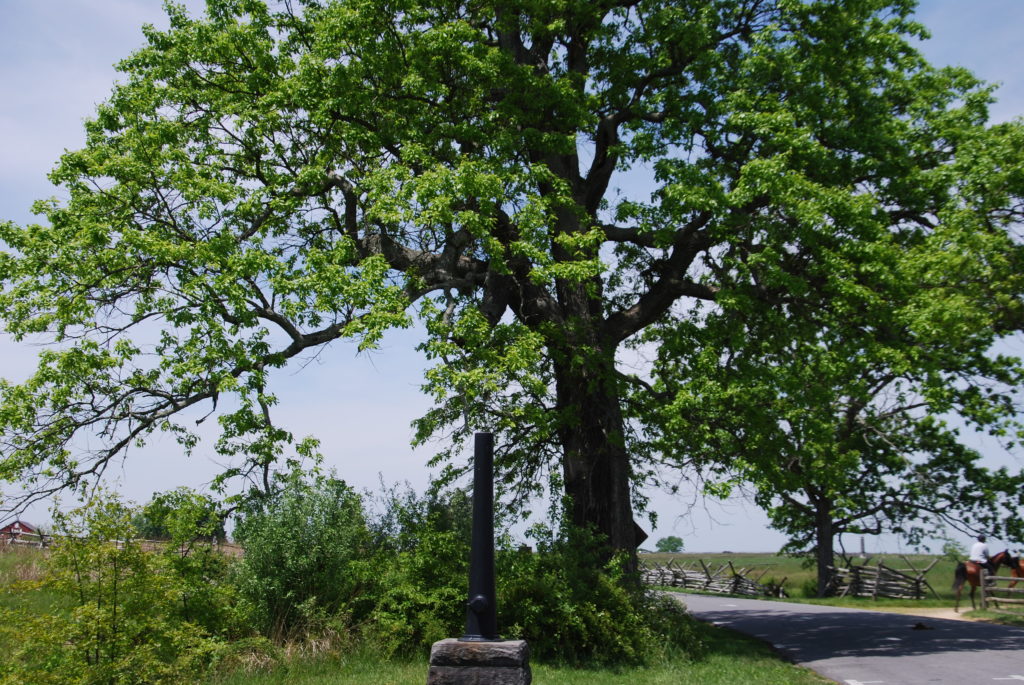
Sickles Oak today. Photo Courtesy of NPS.

This 1863 sketch shows Gen. Sickles and his men took shelter under the shade of a swamp oak. Photo Courtesy of Library of Congress
Sickles Oak at Gettysburg National Military Park in Pennsylvania
The Swamp White Oak, growing next to Union General Daniel Sickles’ headquarters on the grounds of Trostle Farm, witnessed some of Gettysburg’s heaviest fighting. Union Army Major General Daniel E. Sickles and his men gathered under the Sickles Oak during the afternoon of July 2, 1863, not long before Sickles disobeyed direct orders and marched his men into disaster. The Sickles Oak was at least 75 years old at the time of the battle, and it’s now a healthy look tree that’s one of the most accessible at Gettysburg.

This 1862 photo by Alexander Gardner showcases the destruction following the bloodiest day of the Civil War. Photo Courtesy of Library of Congress.
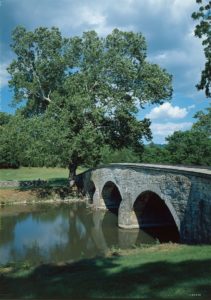
Burnside’s Bridge, and the sycamore, still stand today. Photo Courtesy of NPS.
Burnside Sycamore at Antietam National Battlefield in Maryland
During the afternoon of September 17, 1862, General Ambrose Burnside and his Union troops battled three hours against dug-in Confederate positions to cross a bridge over Antietam Creek. An additional two hours of fighting ensued against Confederate reinforcements. There were more than 600 casualties at Burnside Bridge, contributing to the Civil War’s bloodiest day. Amid all this chaos was a young sycamore growing alongside the bridge. It has since grown into a large specimen, despite threats like flooding and a compromised root system thanks to its location next to the bridge.
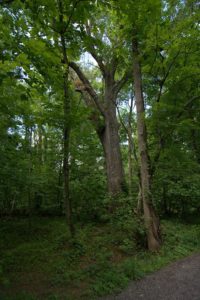
This white oak witness tree stands near Stone Bridge. Photo Courtesy of NPS.
White Oak Tree at Manassas National Battlefield Park in Virginia
The White Oak tree grows in a spot that was strategic for both Union and Confederate armies. When the First Battle of Manassas ended in July 1861, Union troops retreated across the Stone Bridge and through the water. Confederate troops also retreated through here in March 1862, destroying the original Stone Bridge behind them as they evacuated their winter camps. The White Oak stood through it all and now stands in a serene forested area, a far cry from the decimated battlefield it witnessed.
Pawlings Sycamore, Valley Forge National Historical Park
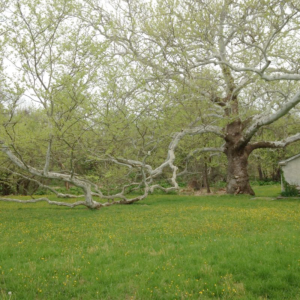
This sprawling sycamore on Pawlings Farm is estimated to be 260-285 years old. Photo Courtesy of NPS.
The site of one of the most pivotal winters for the Continental Army, Valley Forge was the winter home to more than 12,000 soldiers and their families. Originally the Valley Forge area was heavily wooded but when George Washington and his army arrived in 1777 and set up winter encampment nearly every tree in the area was cut down to provide wood for shelter, cooking and defensive works. Ill-equipped for the harsh weather, over 2,000 people died from starvation, diseases, and lack of protection from the elements. There to witness the suffering army was a sycamore located on Pawlings Farm. Sycamore trees made very poor firewood, which may explain why it was left alone.
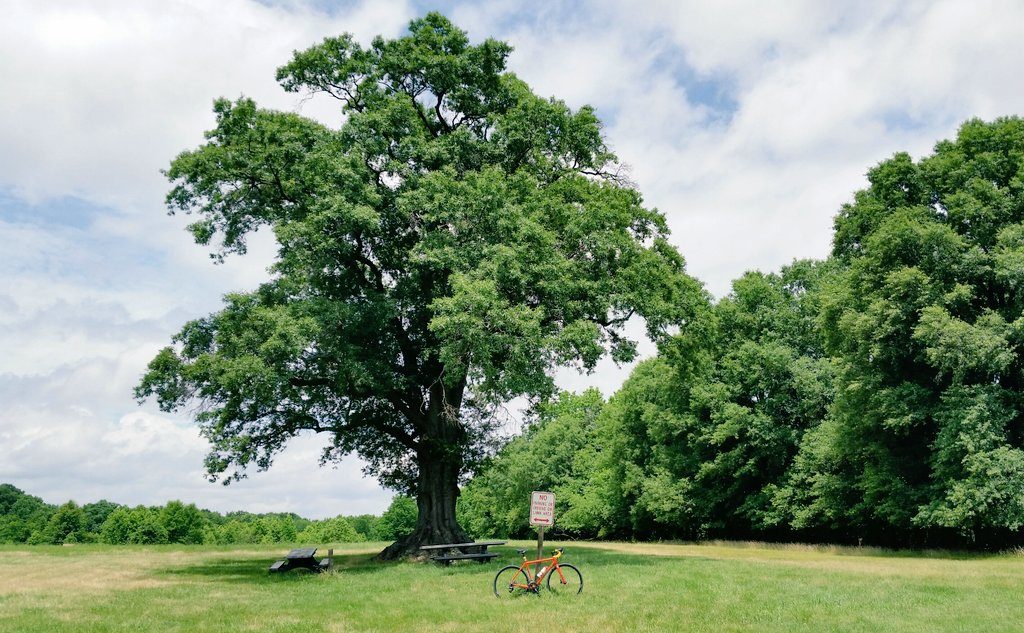
The Willow Oak stands over Oxon Hill today. Photo Courtesy Chris Roell.
War of 1812 Willow Oak at Oxon Cove Park & Oxon Hill Farm in Maryland
Oxon Cove Park & Oxon Hill Farm was once known as Mount Welby, home of British sympathizers Dr. Samuel DeButts and his family. Overlooking Washington, DC, hostilities during the War of 1812 reached the estate, and its trees, during the Battle of Bladensburg in August 1812. British troops ended up defeating American troops about six miles away from Mount Welby, not without intense fighting that shook the house and surrounding area. British troops then headed towards the capital, setting the city, including the White House, on fire. Nowadays, the lonely oak with its thick, gnarled trunk now stands in a grassy field in Maryland, near the parking lot.